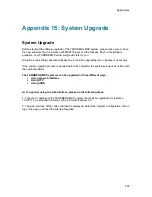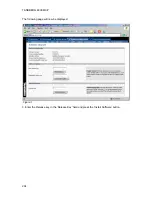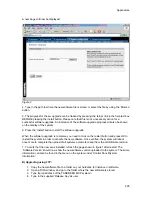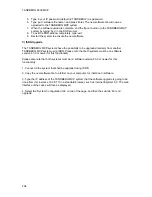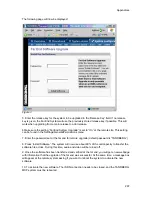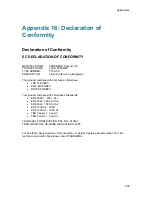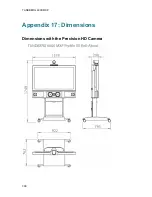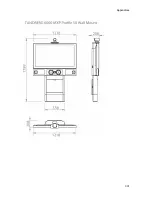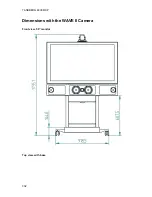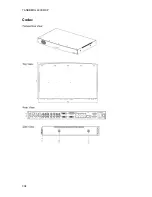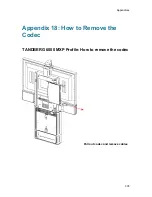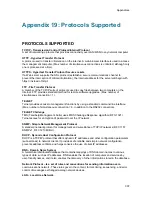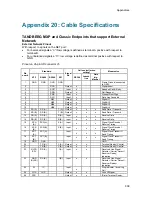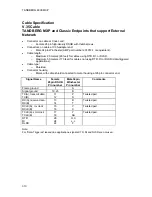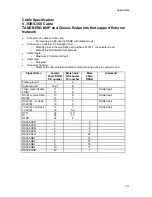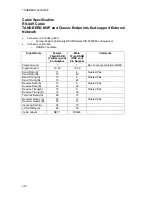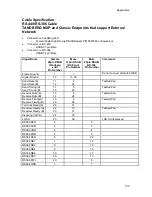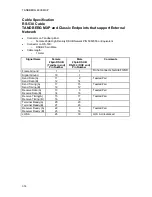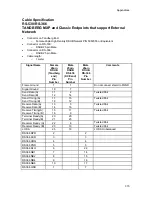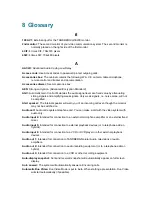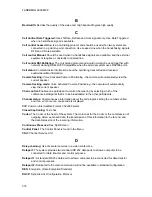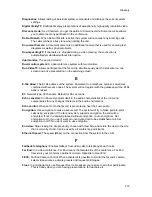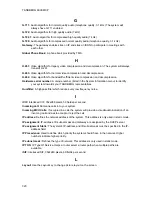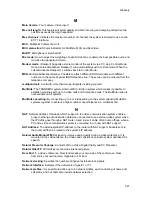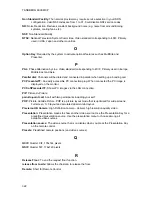
Appendices
307
Appendix 19: Protocols Supported
PROTOCOLS SUPPORTED
TCP/IP - Transmission Control Protocol/Internet Protocol
A set of networking protocols that provides connectivity over LAN/WAN to any network computer.
HTTP - Hypertext Transfer Protocol
A protocol used to transfer information on the internet. A web-browser interface is used to access
the management computer. (Max number of simultaneous connections is unlimited, although only
one is processed at a time).
HTTPS - Hypertext Transfer Protocol Secure sockets
If a Web server supports the SSL protocol (establish a secure communications channel to
prevent the interception of critical information), the Internet address for the server will begin with
https:// instead of http://
FTP - File Transfer Protocol
A member of the TCP/IP suite of protocols used to copy files between two computers on the
Internet. FTP provides standard method for remote software upgrades. (Max. number of
simultaneous connection = 1).
TELNET
Telnet provides access to management functions by using a standard command-line interface.
(Max. number of simultaneous connection = 8, in addition to the RS232 connection).
TELNET Challenge
TMS (Tandberg Management Suite) uses MD5-Challenge Response algorithm (RFC-1321)
Telnet access for encryption of password over the IP network.
SNMP - Simple Network Management Protocol
A standard network protocol for management and surveillance of TCP/IP networks (RFC 1157
SNMP v1, RFC 1213 MIB-II).
DHCP - Dynamic Host Configuration Protocol
DHCP is a TCP/IP protocol that offers dynamic IP addresses and other configuration parameters
(subnet mask) to network clients. It provides safe reliable and simple network configuration,
prevents address conflicts, and helps conserve the use of client IP addresses.
DNS - Domain Name System
A hierarchical distributed database that contains mappings of DNS domain names to various
types of data, such as IP addresses. DNS enables the location of computers and services by
user-friendly names, and it also enables the discovery of other information stored in the database.
Network Protocol – Is a set of rules and conventions for sending information over a
communications network. These rules govern the content, format, timing, sequencing, and error
control of messages exchanged among network devices.
LAN – Local Area Network
Summary of Contents for 6000 MXP Profile
Page 14: ......
Page 145: ...General Use 131 PC Presentation shown in Wide stretched mode ...
Page 205: ...General Use 191 Voice Switched mode ...
Page 268: ...TANDBERG 6000 MXP 254 ...
Page 293: ...Appendices 279 ...
Page 297: ...Appendices 283 Top view ...
Page 300: ...TANDBERG 6000 MXP 286 Dimensions Front view Side view Rear view Underside view ...
Page 314: ...TANDBERG 6000 MXP 300 Appendix 17 Dimensions Dimensions with the Precision HD Camera ...
Page 315: ...Appendices 301 ...
Page 317: ...Appendices 303 Top view 50 monitor ...
Page 318: ...TANDBERG 6000 MXP 304 Codec ...
Page 320: ...TANDBERG 6000 MXP 306 ...

